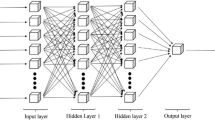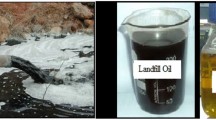Abstract
Stirling engine is considered as one of the most promising alternatives to conventional combustion units due to its versatility and potential to achieve relatively high efficiency. The output power and torque are the main performance indicators that depend on many variables. Many studies have pointed out that the relationship between the performance indicators of the Stirling engine and its input variables was nonlinear. This study analyses the prediction performance of power and torque in a Stirling engine system using soft computing techniques—artificial neural network (ANN) and Fuzzy Mamdani Model (FMM) and hybrid algorithms—adaptive neuro-fuzzy inference system (ANFIS) and artificial neural network trained with particle swarm optimization (ANN-PSO). The performance of these approaches has been discussed using a dataset from a test conducted on an existing Stirling engine. The performance indicators of the different models considering the power and the torque were predicted and analysed. A parametric analysis has been performed for the ANN-PSO model to identify the best model configuration considering the number of neurons in hidden layers, the number of swarm size and acceleration factors. A detailed description of the process leading to the identification of the best networks architecture for the power and torque model has been provided. The comparison of the four approaches indicates that FMM exhibits the highest performance prediction considering the power while the ANN-PSO and ANFIS model exhibit the highest performance considering the torque. This study demonstrates the suitability of soft computing techniques and hybrid algorithms for the prediction of Stirling engine characteristics and its potential to optimize time and experimental cost.




























Similar content being viewed by others
Explore related subjects
Discover the latest articles, news and stories from top researchers in related subjects.References
Cheng CH, Yu YJ (2010) Numerical model for predicting thermodynamic cycle and thermal efficiency of a beta-type Stirling engine with rhombic-drive mechanism. Rene Energy 35(11):2590–2601
Ahmed F, Huang H, Ahmed S, Wang X (2020) A comprehensive review on modeling and performance optimization of Stirling engine. Int J Energy Res 44(8):6098–6127
Kolin I, Motor S (1991) History-theory-practice. Zagreb University Publications LTD, Dubrovnik
Biwa T, Tashiro Y, Yazaki T (2008) How does Stirling engine work? J Power Energy Syst 2(5):1254–1260
Torres García M, Carvajal Trujillo E, Vélez Godiño JA, Sánchez Martínez D (2018) Thermodynamic model for performance analysis of a Stirling engine prototype. Energies 11(10):2655
Senft JR (1993) General analysis of the mechanical efficiency of reciprocating heat engines. J Franklin Inst 330(5):967–984
Ahmadi MH, Ahmadi MA, Mehrpooya M, Rosen MA (2015) Using GMDH neural networks to model the power and torque of a stirling engine. Sustainability 7(2):2243–2255
Toghyani S, Ahmadi MH, Kasaeian A, Mohammadi AH (2016) Artificial neural network, ANN-PSO and ANN-ICA for modelling the Stirling engine. Int J Ambient Energy 37(5):456–468
Ahmadi MH, Aghaj SSG, Nazeri A (2013) Prediction of power in solar stirling heat engine by using neural network based on hybrid genetic algorithm and particle swarm optimization. Neural Comput Appl 22(6):1141–1150
Karabulut H, Çınar C, Oztürk E, Yücesu HS (2010) Torque and power characteristics of a helium charged Stirling engine with a lever controlled displacer driving mechanism. Renew Energy 35(1):138–143
Machesa MG, Tartibu LK, Tekweme FK, Okwu MO. Evaluation of the Stirling heat engine performance prediction using ANN-PSO and ANFIS models. In: 2019 6th International conference on soft computing & machine intelligence (ISCMI) 2019 Nov 19 (pp. 217–222). IEEE, New York. https://doi.org/10.1109/ISCMI47871.2019.9004406.
Momeni E, Armaghani DJ, Hajihassani M, Amin MFM (2015) Prediction of uniaxial compressive strength of rock samples using hybrid particle swarm optimization-based artificial neural networks. Measurement 60:50–63
Okwu MO, Tartibu LK (2021) Artificial Neural Network. In: Metaheuristic optimization: nature-inspired algorithms swarm and computational intelligence, theory and applications. studies in computational intelligence, vol 927. Springer, Cham. https://doi.org/10.1007/978-3-030-61111-8_14
Uhrig RE (1995) November. Introduction to artificial neural networks. In: Proceedings of IECON'95–21st annual conference on IEEE industrial electronics (Vol. 1, pp. 33–37). IEEE,New York.
Okwu MO, Chukwu VU, Oguoma O (2019) Application of artificial neural network model for cost optimization in a single-source, multi-destination system with non-deterministic inputs. In: Rojas I, Joya G, Catala A (eds) Advances in computational intelligence. IWANN 2019. Lecture Notes in Computer Science, vol 11507. Springer, Cham https://doi.org/10.1007/978-3-030-20518-8_45
Karnin ED (1990) A simple procedure for pruning back-propagation trained neural networks. IEEE Trans Neural Netw 1(2):239–242
Abiodun OI, Jantan A, Omolara AE, Dada KV, Mohamed NA, Arshad H (2018) State-of-the-art in artificial neural network applications: a survey. Heliyon 4(11):e00938
Machesa MGK, Tartibu LK, Tekweme FK, Okwu MO (2019) Prediction of oscillatory heat transfer coefficient in heat exchangers of thermo-acoustic systems, International mechanical engineering congress and exposition. In Proceedings of the ASME 2019, November 11–14, 2019, Salt Lake City, UT, USA.
Okwu MO, Samuel OD, Otanocha OB et al (2020) Development of ternary models for prediction of biogas yield in a novel modular biodigester: a case of fuzzy Mamdani model (FMM), artificial neural network (ANN), and response surface methodology (RSM). Biomass Conv Bioref. https://doi.org/10.1007/s13399-020-01113-1
Giannetti N, Redoc MA, Sholahudinc JJ, Yamaguchi S, Saito K, Kim H (2020) Prediction of two-phase flow distribution in microchannel heat exchangers using artificial neural network. Int J Refrig 111:53–62
Aguel S, Meddeb Z, Jeday MR (2020) Parametric study and modeling of cross-flow heat exchanger fouling in phosphoric acid concentration plant using artificial neural network. J Process Control 84:133–145
Davoudi E, Vaferi B (2018) Applying artificial neural networks for systematic estimation of degree of fouling in heat exchangers. Chem Eng Res Des 130:138–153.
Xiaoqiang W, Qinglong M, Jianguo W, Zhoulei J (2017) A multi-resolution wavelet neural network approach for fouling resistance forecasting of a plate heat exchanger. Appl Soft Comput 57:177–196
Mohaghegh SD (2000) Virtual-intelligence applications in petroleum engineering: part 3- fuzzy logic. SPE 62415, Distinguished Authors Series
Asif Afzal MK Ramis (2020) Multi-objective optimization of thermal performance in battery system using genetic and particle swarm algorithm combined with fuzzy logics. J Energy Storage. https://doi.org/10.1016/j.est.2020.101815.
Masoumi AP, Tavakolpour-Saleh AR, Rahideh A (2020) Applying a genetic-fuzzy control scheme to an active free-piston Stirling engine: design and experiment. Appl Energy (IF 8.848). https://doi.org/10.1016/j.apenergy.2020.115045.
Nwachukwu A (2019) (2018) A review of fuzzy logic applications in petroleum exploration, production and distribution operations. J Petrol Exploration Prod Technol 9:155–1568
Jang JS (1993) ANFIS: adaptive-network-based fuzzy inference system. IEEE Trans Syst Man Cybern 23(3):665–685
Adetunji O, Okwu MO (2018) A comparative study of artificial neural network (ANN) and adaptive neuro-fuzzy inference system (ANFIS) models in distribution system with non-deterministic inputs. Int J Eng Bus Manage 10:1–17. https://doi.org/10.1177/1847979018768421
Okwu MO, Tartibu LK (2020) Sustainable supplier selection in the retail industry: a TOPSIS- and ANFIS-based evaluating methodology. Int J Eng Bus Manage 12:1–14. https://doi.org/10.1177/1847979019899542
Karaboga D, Kaya E (2019) Adaptive network-based fuzzy inference system (ANFIS) training approaches: a comprehensive survey. Artif Intell Rev 52(4):2263–2293
Dehghani MH, Riahi-Madvar M, Hooshyaripor M et al (2019) Prediction of hydropower generation using Grey wolf optimization adaptive neuro-fuzzy inference system. Energies 12:1–20
Riahi-Madvar H, Dehghani M, Seifi A et al (2019) Comparative analysis of soft computing techniques RBF, MLP, and ANFIS with MLR and MNLR for predicting grade-control scour hole geometry. Eng Appl Comput Fluid Mech 13:529–550
Rukhaiyar S, Alam MN, Samadhiya NK (2018) A PSO-ANN hybrid model for predicting factor of safety of slope. Int J Geotech Eng 12(6):556–566
Eberhart R, Kennedy J (1995) A new optimizer using particle swarm theory; 1995. In: Sixth international symposium on micro machine and human science. IEEE, Washington, DC, USA.
Author information
Authors and Affiliations
Corresponding author
Ethics declarations
Conflict of interest
All authors declare that they have no conflict of interest.
Additional information
Publisher's Note
Springer Nature remains neutral with regard to jurisdictional claims in published maps and institutional affiliations.
Rights and permissions
About this article
Cite this article
Machesa, M.G.K., Tartibu, L.K. & Okwu, M.O. Performance analysis of stirling engine using computational intelligence techniques (ANN & Fuzzy Mamdani Model) and hybrid algorithms (ANN-PSO & ANFIS). Neural Comput & Applic 35, 1225–1245 (2023). https://doi.org/10.1007/s00521-022-07385-0
Received:
Accepted:
Published:
Issue Date:
DOI: https://doi.org/10.1007/s00521-022-07385-0




